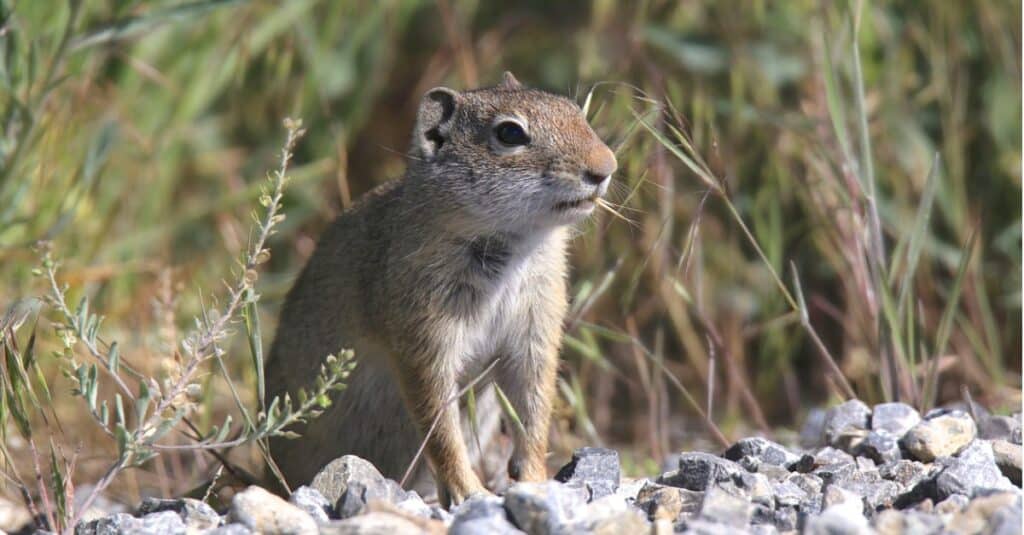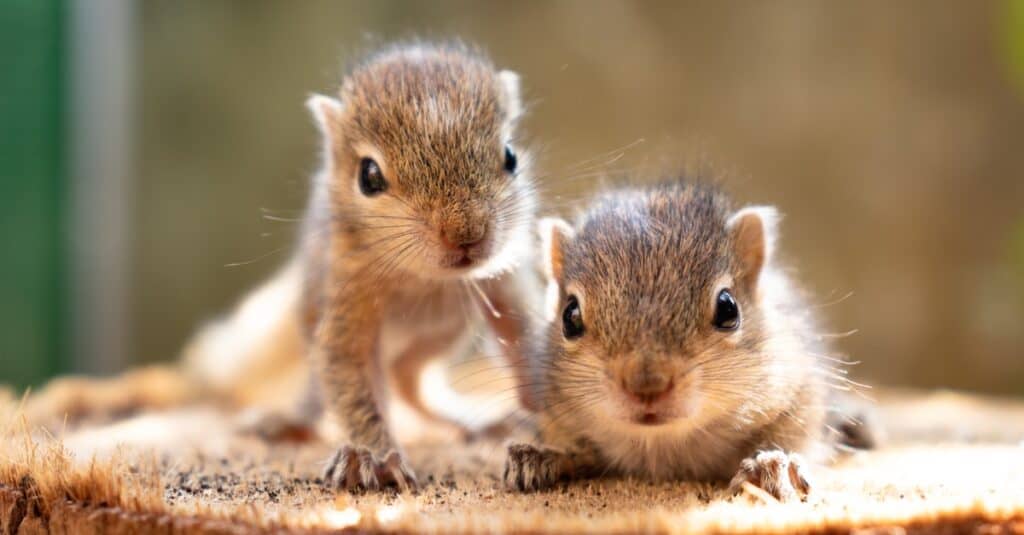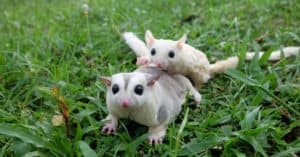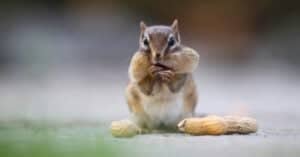Squirrel Mating Season: When Do They Breed?
@media (min-width: 481px) {
.mobile-top-content {
display: none;
}
}
#mobileTopContentCTACarouselControls { overflow: hidden; text-overflow: ellipsis; white-space: nowrap; }
.mobile-top-content .more { color: #fff; }
.mobile-top-content a { color: #fff; text-decoration: underline; }
.mobile-top-content a:hover { color: #fff; text-decoration: underline; }
@media (max-width: 480px) {
.mobile-top-content {
background-color: #06a10b;
color: #fff;
text-align: center;
/*height: 60px;
padding-top:5px;*/
font-size:80%;
/* display: block; */
margin: 0px -30px;
}
}
Ground squirrels, tree squirrels, and flying squirrels make up roughly 200 species of squirrels worldwide. You can find these nut-loving rodents on every continent except Antarctica and Australia. The Indian giant squirrel, Western gray squirrel, and the American red squirrel are a few of the prominent species. Ground squirrels are the only true hibernators, but all squirrels go into a period of dormancy during the cold winter months. They’re experts at stashing food away to sustain them when sustenance is scarce, and will typically spend the winter resting in their nests. When it’s time to get active, they’re ready to mate. When squirrels reach about one year of age they’re ready to reproduce. So, when is squirrel mating season?
When is Squirrel Mating Season?

Most squirrel species actually have two mating periods and will give birth to two litters during the year. Mating seasons vary by climate and species but typically the first is in winter as it heads into spring, and another late spring as it becomes summer.
In warm climates, the first season will take place from late December into February. In colder climates, this occurs from January to March or even May. The second mating season happens toward the end of spring and goes through late summer. This is typically from about May to June, and in colder climates through July or August. Some squirrel species and some less experienced younger females of all species will bear only one litter per year. Also, if food is scarce that year, breeding will only take place once during the year.
Mating Variation by Species

jp signature clicks/Shutterstock.com
The western gray squirrel is a tree squirrel that lives along the west coast of the United States, down through Mexico. It usually gives birth once between February and June. The eastern gray squirrel is native to eastern North America but has been introduced worldwide. It has a similar mating season and will give birth in February or March and again in May or June, depending on climate and seasonal conditions. The Indian giant squirrel is another tree squirrel, one that lives in the forests of India. The mating season for this species is not entirely clear. Some sources say it occurs between October and January, while others have determined that it occurs year-round.
Northern flying squirrels live in North America, and they mate only once per year, from late March through May. Southern flying squirrels live in eastern North America and parts of Central America. They mate twice per year, once in early spring and again in the summer. According to an article in the Journal of Mammalogy, most ground squirrels have a short annual breeding season that begins right after females emerge from winter hibernation. However, the Rio Grande ground squirrel has an extended mating season of 2 months and a long delay of 1 to 2 months between emerging from hibernation and breeding.
The Mating Process

iStock.com/Nancy Strohm
Females give off a strong scent during the mating seasons that alert male squirrels of their fertility. This scent sets them off on the chase to find the available females. During mating times, you may see squirrels in a frenzy. This behavior looks like play, and sometimes squirrels do play. But if it looks like squirrels are playing chase in your yard, mating season is probably underway. This can be a high-speed chase, as squirrels can run up to 16 miles per hour and jump up to 8 feet high. They may also slap the bark of trees with their paws to create a sound that draws attention. If more than one male is in pursuit, they’ll try to chase one another off and will fight at times.
Although both males and females have multiple partners, the first to mate with a female is usually the father of the litter, so competition can be fierce. Male squirrels can actually insert a waxy plug into females creating a barrier to other males’ sperm. However, females can remove this if they’d like to. The female squirrel will mate with the male she determines is strongest. She’ll recognize him from then on and make sure never to mate with him again. After mating, the male squirrel’s role in procreation is over. He doesn’t take part in raising the young.
Squirrel Nesting Behavior
Squirrels maintain different types of nesting sites and behaviors based on species and their regions. Tree squirrels and flying squirrels will nest in tree cavities or tree branches high above the ground. The nests in tree cavities, called dreys, are often used during warmer months. These globe-shaped nests are made of twigs, bark, fur, feathers, leaves, grass, and other suitable materials. Ground squirrels may dig underground tunnels to create a safe network of spaces for shelter, rearing young, and food storage.
Female squirrels will often create 4 to 5 nests within a reasonable range of her primary nest. If she feels one is no longer safe, she’ll move to one of her alternates with her young. Some nest sites may be shared with other squirrels. These nests are very important for raising young but are also used for shelter and rest throughout the year.
Baby Squirrels

Nilanka Sampath/Shutterstock.com
The gestation period for squirrels is 3 to 8 weeks, with the average period being about 6 weeks. As mammals, they give birth to live young and a litter is usually 2 to 4, but they can give birth to up to 8 babies at a time. Squirrel babies called kits or kittens are born blind, deaf, and hairless. Therefore, they’re dependent on their mothers for survival. They open their eyes at about 4 weeks old and at 6 weeks may start to venture out of the nest. This is about the time that they may begin to wean from their mothers’ milk, around 6 to 10 weeks. They need to learn to gather their own food and survive on their own, but mother squirrels will provide care and guidance until they’re fully independent.
More from A-Z Animals
.more-snake-card-image { max-height:140px !important; }
@media (min-width: 481px) {
.mobile-top-content {
display: none;
}
}
#mobileTopContentCTACarouselControls { overflow: hidden; text-overflow: ellipsis; white-space: nowrap; }
.mobile-top-content .more { color: #fff; }
.mobile-top-content a { color: #fff; text-decoration: underline; }
.mobile-top-content a:hover { color: #fff; text-decoration: underline; }
@media (max-width: 480px) {
.mobile-top-content {
background-color: #06a10b;
color: #fff;
text-align: center;
/*height: 60px;
padding-top:5px;*/
font-size:80%;
/* display: block; */
margin: 0px -30px;
}
}
Ground squirrels, tree squirrels, and flying squirrels make up roughly 200 species of squirrels worldwide. You can find these nut-loving rodents on every continent except Antarctica and Australia. The Indian giant squirrel, Western gray squirrel, and the American red squirrel are a few of the prominent species. Ground squirrels are the only true hibernators, but all squirrels go into a period of dormancy during the cold winter months. They’re experts at stashing food away to sustain them when sustenance is scarce, and will typically spend the winter resting in their nests. When it’s time to get active, they’re ready to mate. When squirrels reach about one year of age they’re ready to reproduce. So, when is squirrel mating season?
When is Squirrel Mating Season?

Most squirrel species actually have two mating periods and will give birth to two litters during the year. Mating seasons vary by climate and species but typically the first is in winter as it heads into spring, and another late spring as it becomes summer.
In warm climates, the first season will take place from late December into February. In colder climates, this occurs from January to March or even May. The second mating season happens toward the end of spring and goes through late summer. This is typically from about May to June, and in colder climates through July or August. Some squirrel species and some less experienced younger females of all species will bear only one litter per year. Also, if food is scarce that year, breeding will only take place once during the year.
Mating Variation by Species

jp signature clicks/Shutterstock.com
The western gray squirrel is a tree squirrel that lives along the west coast of the United States, down through Mexico. It usually gives birth once between February and June. The eastern gray squirrel is native to eastern North America but has been introduced worldwide. It has a similar mating season and will give birth in February or March and again in May or June, depending on climate and seasonal conditions. The Indian giant squirrel is another tree squirrel, one that lives in the forests of India. The mating season for this species is not entirely clear. Some sources say it occurs between October and January, while others have determined that it occurs year-round.
Northern flying squirrels live in North America, and they mate only once per year, from late March through May. Southern flying squirrels live in eastern North America and parts of Central America. They mate twice per year, once in early spring and again in the summer. According to an article in the Journal of Mammalogy, most ground squirrels have a short annual breeding season that begins right after females emerge from winter hibernation. However, the Rio Grande ground squirrel has an extended mating season of 2 months and a long delay of 1 to 2 months between emerging from hibernation and breeding.
The Mating Process

iStock.com/Nancy Strohm
Females give off a strong scent during the mating seasons that alert male squirrels of their fertility. This scent sets them off on the chase to find the available females. During mating times, you may see squirrels in a frenzy. This behavior looks like play, and sometimes squirrels do play. But if it looks like squirrels are playing chase in your yard, mating season is probably underway. This can be a high-speed chase, as squirrels can run up to 16 miles per hour and jump up to 8 feet high. They may also slap the bark of trees with their paws to create a sound that draws attention. If more than one male is in pursuit, they’ll try to chase one another off and will fight at times.
Although both males and females have multiple partners, the first to mate with a female is usually the father of the litter, so competition can be fierce. Male squirrels can actually insert a waxy plug into females creating a barrier to other males’ sperm. However, females can remove this if they’d like to. The female squirrel will mate with the male she determines is strongest. She’ll recognize him from then on and make sure never to mate with him again. After mating, the male squirrel’s role in procreation is over. He doesn’t take part in raising the young.
Squirrel Nesting Behavior
Squirrels maintain different types of nesting sites and behaviors based on species and their regions. Tree squirrels and flying squirrels will nest in tree cavities or tree branches high above the ground. The nests in tree cavities, called dreys, are often used during warmer months. These globe-shaped nests are made of twigs, bark, fur, feathers, leaves, grass, and other suitable materials. Ground squirrels may dig underground tunnels to create a safe network of spaces for shelter, rearing young, and food storage.
Female squirrels will often create 4 to 5 nests within a reasonable range of her primary nest. If she feels one is no longer safe, she’ll move to one of her alternates with her young. Some nest sites may be shared with other squirrels. These nests are very important for raising young but are also used for shelter and rest throughout the year.
Baby Squirrels

Nilanka Sampath/Shutterstock.com
The gestation period for squirrels is 3 to 8 weeks, with the average period being about 6 weeks. As mammals, they give birth to live young and a litter is usually 2 to 4, but they can give birth to up to 8 babies at a time. Squirrel babies called kits or kittens are born blind, deaf, and hairless. Therefore, they’re dependent on their mothers for survival. They open their eyes at about 4 weeks old and at 6 weeks may start to venture out of the nest. This is about the time that they may begin to wean from their mothers’ milk, around 6 to 10 weeks. They need to learn to gather their own food and survive on their own, but mother squirrels will provide care and guidance until they’re fully independent.




